When I first looked at the itinerary for this cruise, I was smitten with the idea of visiting lots of small Norwegian towns along the coastline. I envisioned quaint villages of some sort; I honestly had no idea what coastal Norwegian towns looked like. That provided me with some additional anticipation because I always look forward to experiencing things wherein I was previously clueless. Come to think of it, I look forward to a lot of things nowadays.



Nordvågen is a perfect example of what I wanted to see. It’s just a small fishing village with a fish processing plant and population of under 500 people. Our ship’s capacity is 640 passengers, which means that any time the ship docks, the population of the town more than doubles. I took notes in case I ever need to orchestrate an invasion of a town from a cruise ship. If all the old people pulled their weight I think we could win… that is as long as we all get potty breaks during the battle.



Tim and I wandered the streets separately gathering photos; the gals really didn’t want to brave the cold so it was up to their manly, burly, and heroic men to shoulder the sightseeing load. As you can see, it was obviously cold enough for the snow to pile up, which meant that it was quiet and beautiful. I love when you’re walking along and can only hear the crunch of your boots on the snow, and your labored breathing, and a weird sound from your chest that makes you wonder if you’re starting to have a heart attack.


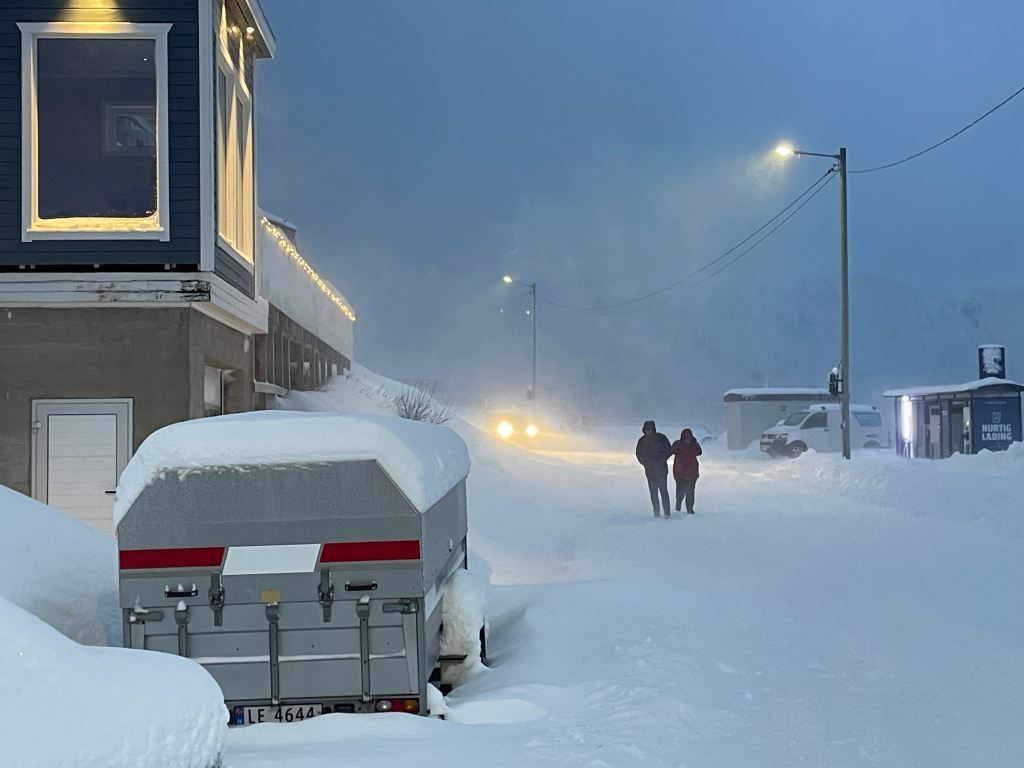
The residents are obviously very used to the cold; there were as many people wandering around as I might’ve imagined in the summer as well. Note that these photos were taken around noon; the sun is something to be feared in these northern areas.


I saw a number of these clever transports, called a sparkstoetting or kick sled; you just walk behind it and slide your groceries, or dead body, or whatever you need to transport, along the snow. Plus they make great kindling in case of a snowdrift emergency.

Scandinavians are famous for leaving their babies outside, even in the bitter cold. They believe that fresh air and nature play a crucial role in a child’s health and development, and even healthy sleep patterns. I heard somewhere that the tradition may have started due to some ugly babies, whereby the parents hoped they’d get stolen thinking they had a bit too much troll blood in them. But most Norwegians don’t want to even broach that topic, at least based on the very rude expressions I received after I asked why Norwegians hate ugly babies. They do claim the whole thing even makes people more independent, which is why they believe so many leave home earlier than in other countries (yeah, nothing about it being due to being bad parents, which people who try and get their ugly babies stolen most certainly are). Based on the data that shows Scandinavians are generally happier and healthier than pretty much anyone else in the world, I’m not gonna argue with them about any of their customs, even if they have to raise the ugly kids too. I’m glad my parents did… otherwise I wouldn’t have had any brothers or sisters.



The style of their housing reminded me a bit of American housing, especially in the Pacific Northwest. There’s not really a specific style I can cite, especially since I wouldn’t know the building terms anyway because I forgot everything I learned in the architectural school I never went to, but they do use a lot of wood, probably on account of the trees, which is known to be a good source of wood. They also defy the European stereotype of having lots of ancient, charming buildings, mostly because everything got bombed during the war, plus the more ancient you get that far north, the more everything was made out of snow and didn’t last. Exploding igloos sure looked cool though.


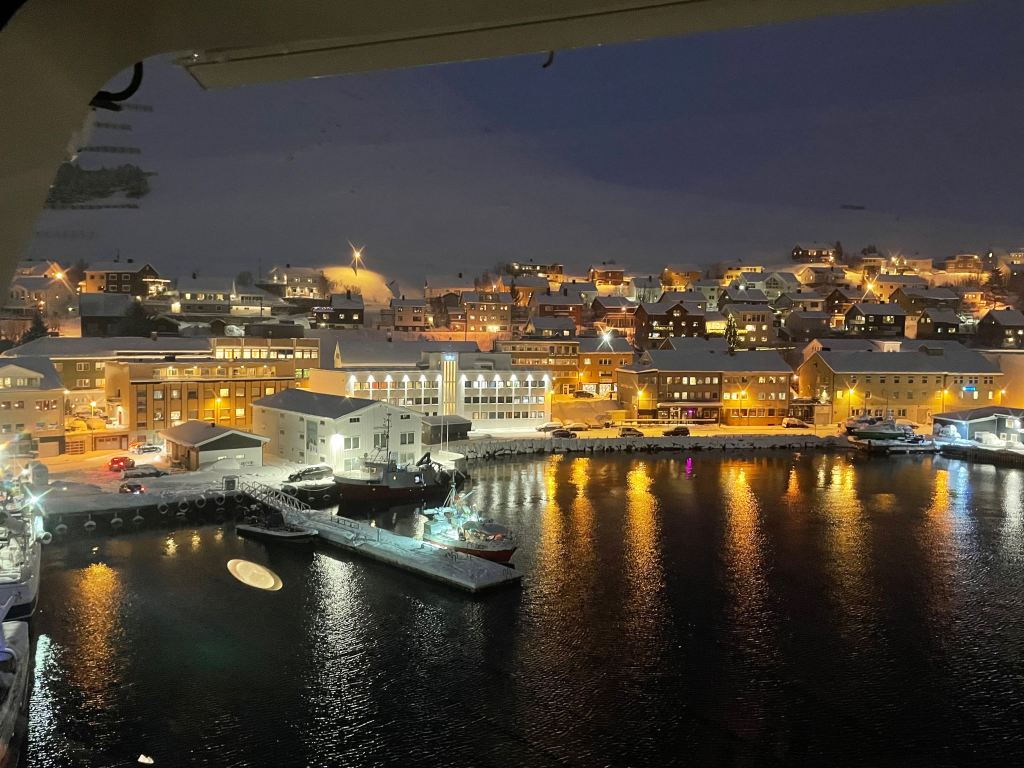

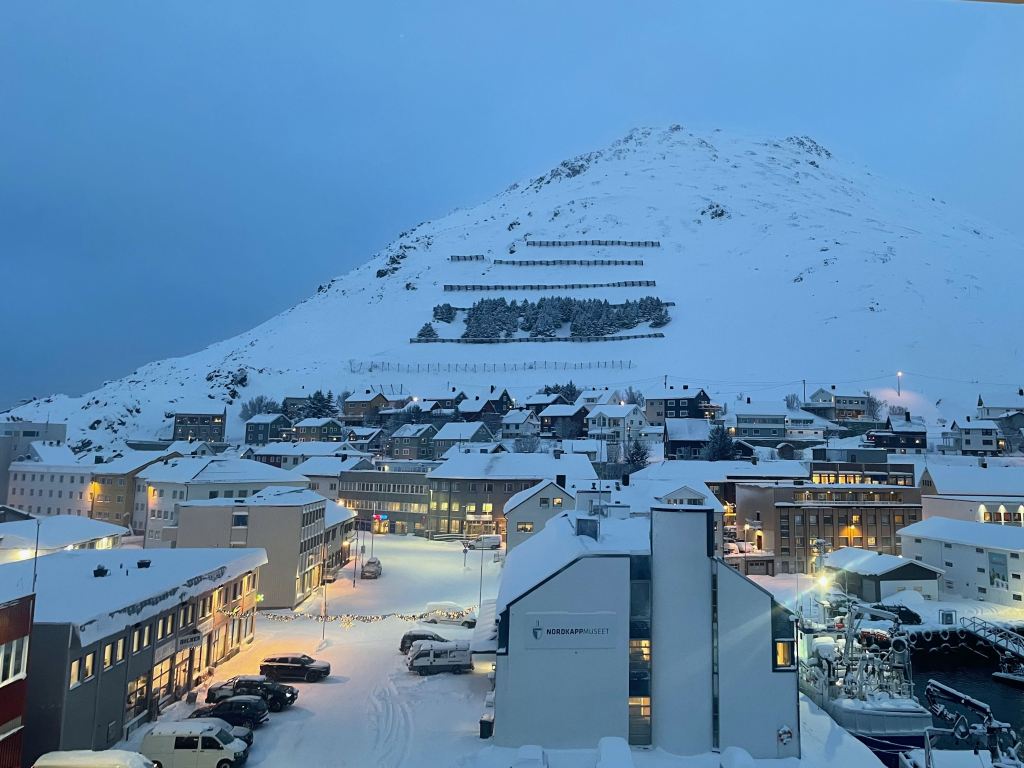
I have to say that I have a hard time imagining very many towns in the world with less than 500 people in them looking as good as Nordvågen. The snow of course helped, but it’s just a sweet little town that wasn’t designed for tourism, but instead just to keep their population warm, safe, and comfortable.
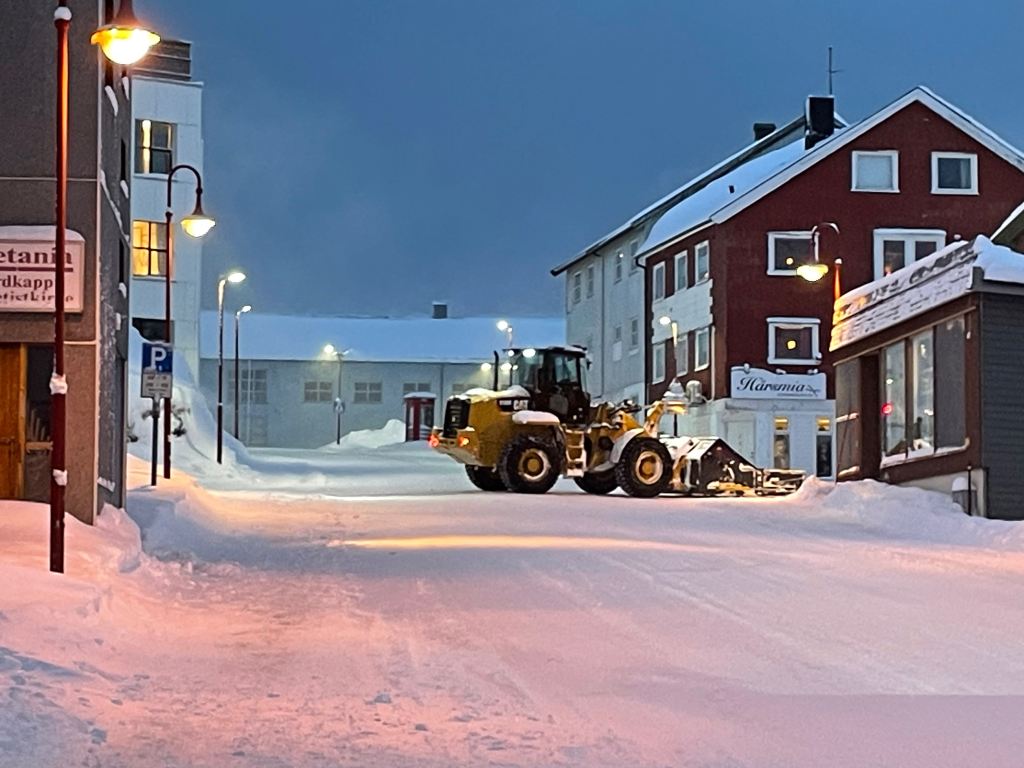
I’m pretty sure at least half the vehicles we saw were either snow plows or tractors that moved piles of snow from one place to another. In July, the average high in Nordvågen is 56°F (13°C), and otherwise hovers around freezing during the winter months. I had a hard time finding data about how much snowfall Nordvågen gets –I suppose because the town is so small– but suffice it to say there was plenty while we were there. Snow wonder they get plowed!

As I wandered in the subzero cold, I marveled at this business that had its main door propped open like it was the middle of summer. I guess they need that natural air conditioning to get the temperatures close to freezing, where these hardy Norwegians are most comfortable.
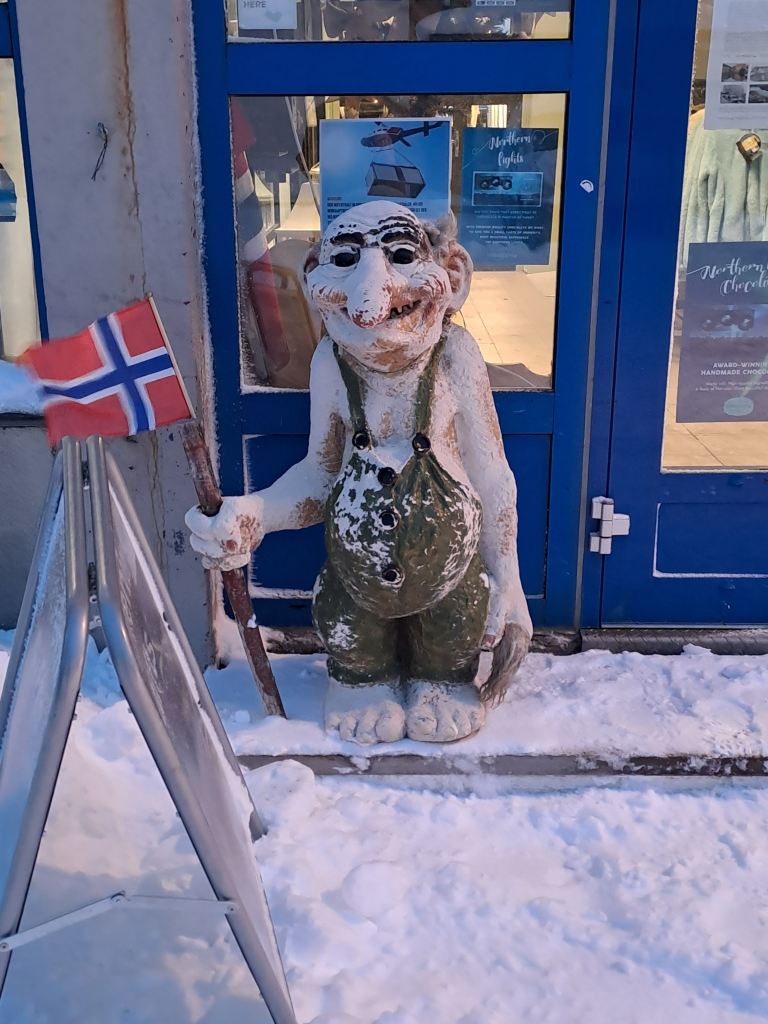
I wanted to warn them that the cold was dangerous and if you exposed yourself to it long enough you might end up frozen solid like this poor chap, but I figured they must know what they are doing. Or maybe this is just how they bury people: they prop them up until spring comes then it’s a race to see which thaws first, the ground or the dead body. Anyway, this was obviously one of the ugly unstolen babies.

I was delighted to see this Danger Warning I received on my phone while I wandered about the town. It made me feel really good that even though I was a tourist from another country, if there was a big problem, like a landslide, a Russian invasion, or a herd of ugly babies wreaking havoc, I’d be made aware of it. The text was even in English! This is but one example as to the benefits received when a country invests in its infrastructure and really tries to look out for its citizenry. On the other hand, maybe they were just warning me that I had a bill from Vodafone; not having a working cell phone nowadays could certainly be called a threat to life and health.

Even in a town this small, they have a store that specializes in everything a man might want. I mean, what guy doesn’t want to walk into a store filled with nothing but man shjit? In English, moil means “hard work,” because real men don’t like nothin’ that didn’t take some effort. Hard work and man shijit: it’s what makes Norwegian men feel like Thor.

After that, we finally made it to Kirkenes (one of the cruise personnel told me it’s pronounced “Sheerkenes,” more or less), which is the Norwegian town closest to the Russian border. It was here, in Kirkenes, that I met up with my two CIA handlers, code-named Jim and Joe, who were assigned to assist in the Poo-Poo-Putin operation I’d been planning ever since I was invited on the cruise. BTW, if something should ever happen to me, Tim and Susan had no idea about the plan. They made a perfect cover story.



Not only are they a cute and loving couple, but I was able to use Susan’s coat as a landmark during an especially sensitive part of the operation. I was four miles out (6.4 km or 14,305 cubits) and was running out of hope until I saw a smudge of sunshine shimmering across the tundra. I will say that the coat isn’t great in the city… we were never sure if people were going to accelerate through the yellow light or come to a screeching halt thinking it’s about to turn red. Insurance rate increases followed Susan everywhere she walked.



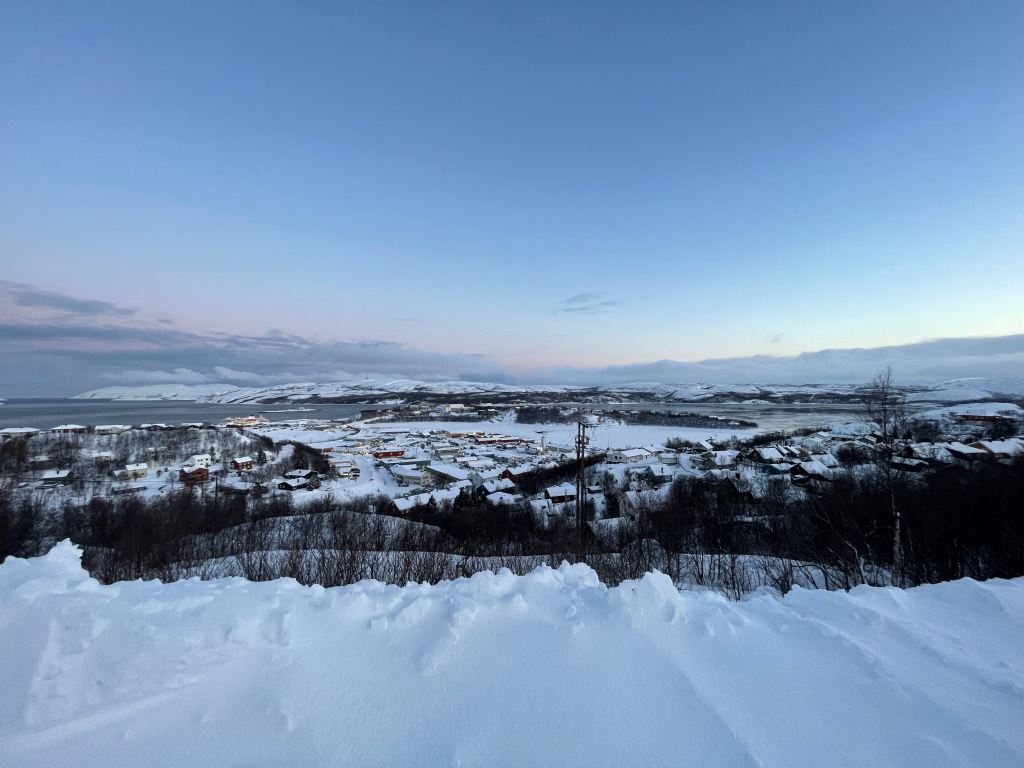




The bus stopped along the way to let us enjoy these spectacular views. I think some of the scenery might be Russian, but it’s so hard to tell nowadays because once they stopped with the Communism all the red went away and so now it’s really hard to tell where Norway stops and Russia starts. I yelled “Putin sucks!” real loud just to see if I could see a flash from a weapon across the way. I wasn’t worried: everyone knows Russians are bad shots.
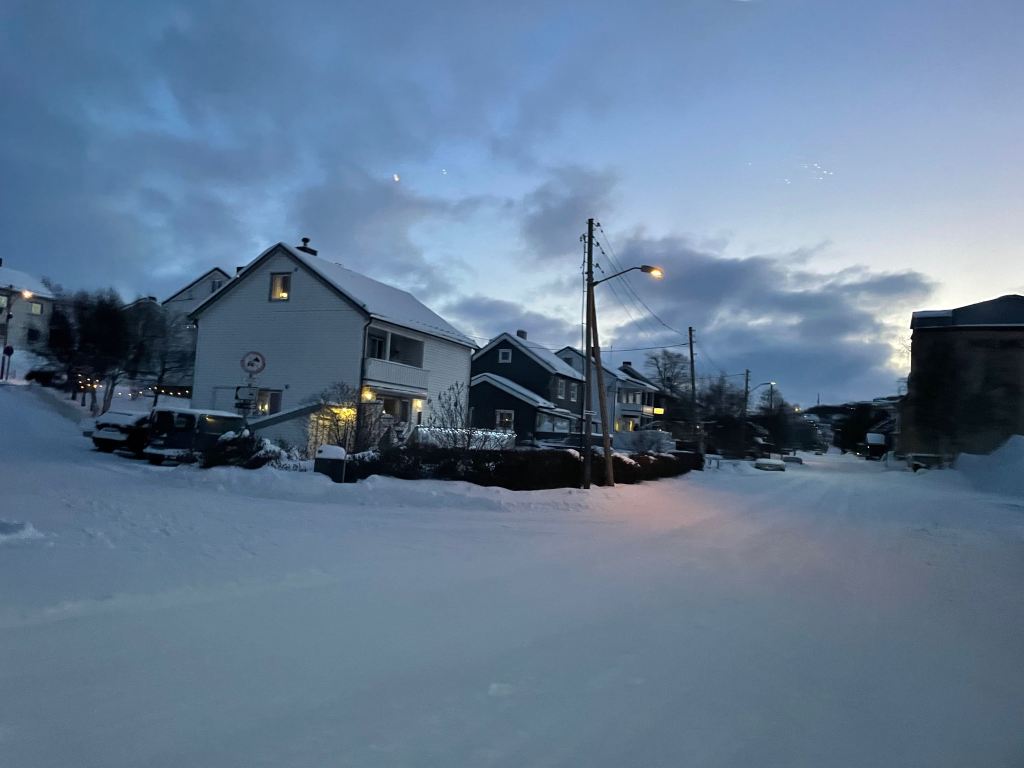

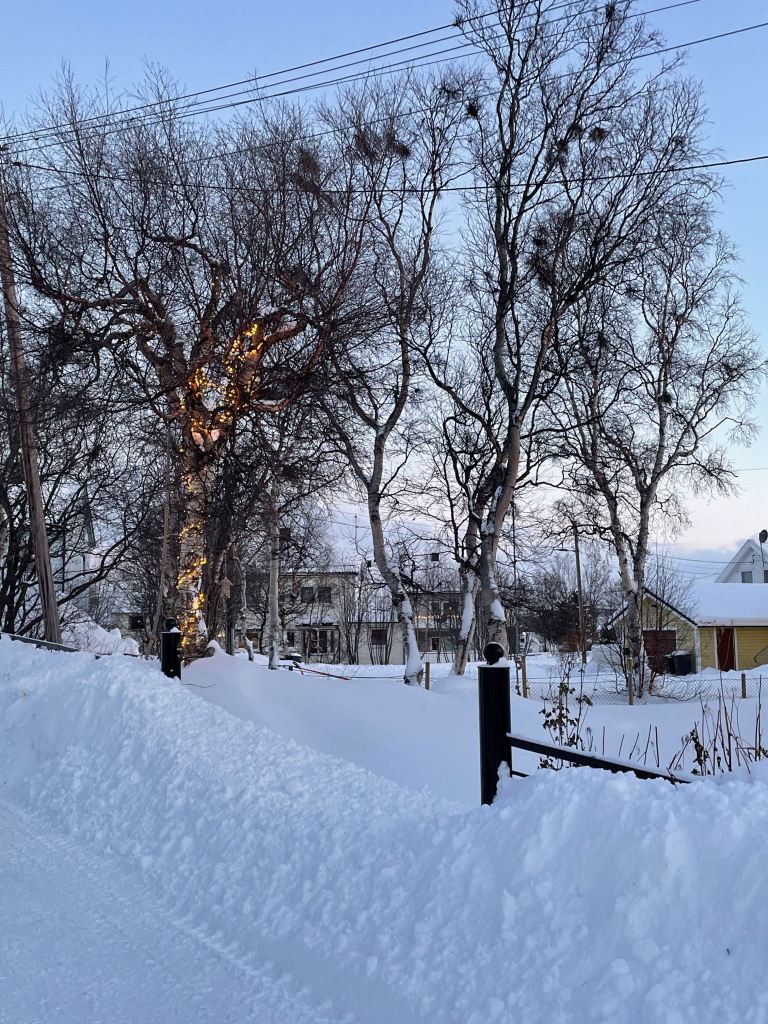






When I travel to another country, I’m always interested in two things: their housing and their grocery stores. I think it has something to do with my curiosity as to how people in other countries really live. I thought it was interesting that just minutes from the Russian border a town in the far north of Norway has houses that could be plopped down in the middle of a Portland, Oregon or Seattle, Washington neighborhood, and no one would think a thing of it, other than wondering why a pair of witch’s shoes were poking out from beneath the foundation.

This is actually a symbolic Russian/Norwegian border in the middle of a Kirkenes neighborhood. If I remember what our tour guide said, they use some buildings nearby as a place for meetings or negotiations or some such. Obviously the red post is for the Russian commies, and the yellow one symbolizes the sacred Norwegian yellow snow.
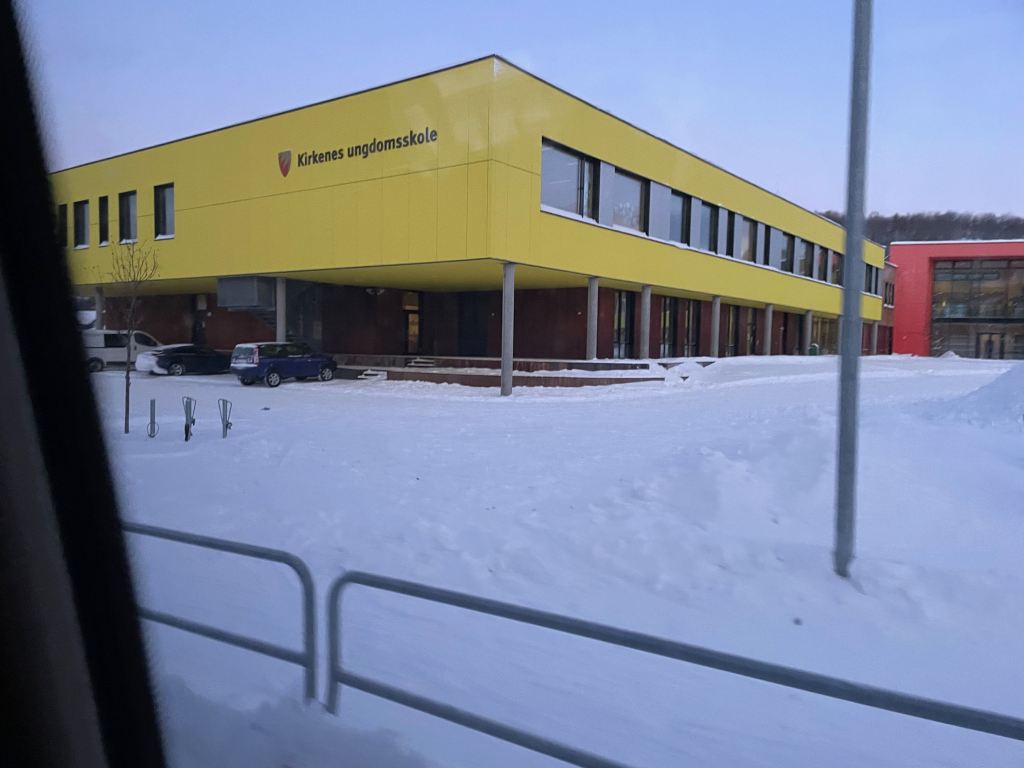
Speaking of yellow, this is a secondary school… I don’t know why I kept taking pictures of schools other than maybe they just stand out. It’s clear that Norway puts a lot of resources into education as well as the health and safety of its children, despite the cowardly paint job.

I finally made it to the undercover meeting place that was set up for Jim, Joe, and myself. Andersgrotta is perfect because it’s a WWII bunker and was named after one of my ancestors. “Grotta” means “cave” in Norwegian, so I have to think the Andersons around here go all the way back to the stone age.



Near Andersgrotta is a monument to Soviet soldiers. In this part of Norway, Norwegians tend to still be grateful that the Russians fought against the occupying Germans in WWII. The Norwegians actually had a great time of it all by setting up a bunch of grandstands where they drank aquavit and ate reindeer on a stick while watching the Soviets and Germans duke it out.




So here we are, smack dab in the middle of a typical Norwegian neighborhood, and amidst all that normalcy is a huge bomb shelter from World War II. The Nazis had bases in Kirkenes for their Kriegsmarine and the Luftwaffe, and it also served as a primary hub for supplies, so it was bombed mercilessly. Only 13 houses in Kirkenes survived the war, and one of those had a really ugly paint job. One bonus is that Kirkenes is one of the cleanest towns in the world, because they bombed the shit right out of all of it. Today, when you include the neighboring villages, the urban area of Kirkenes has about 8,000 people. During the war, as many as 70–100,000 Germans were billeted in the Kirkenes area at any given time. I’m guessing any Norwegian hookers alive back then made a fortune, even if they were ugly.
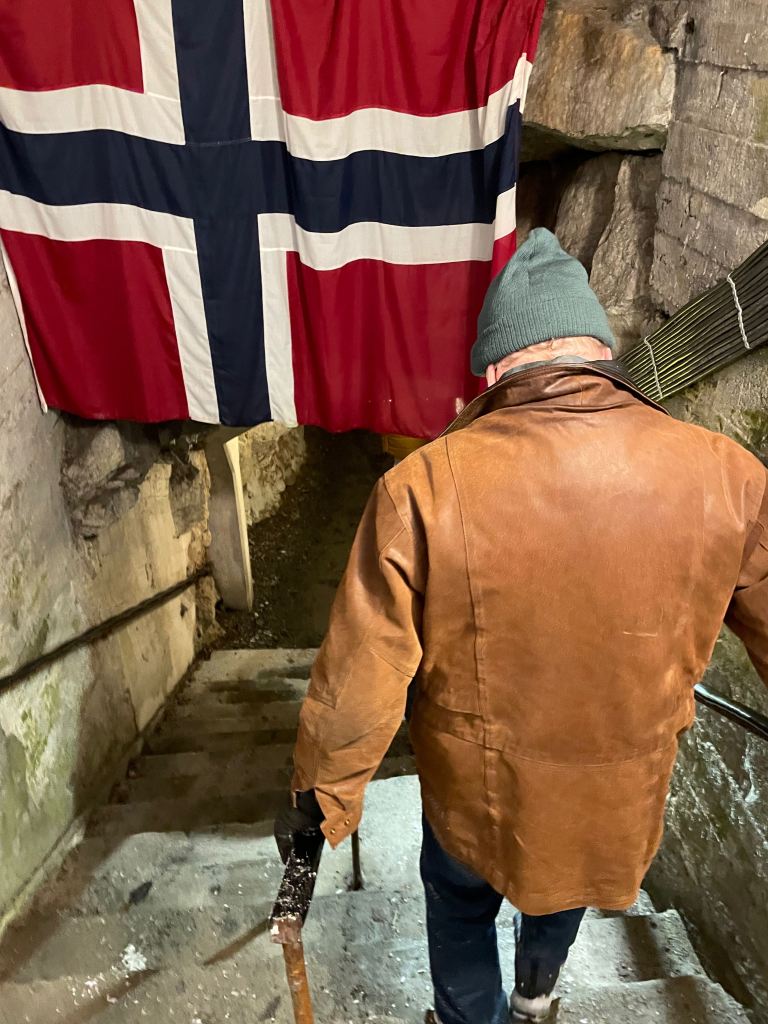



So down we went into the labyrinth. Being surrounded on all sides by solid rock was a bit eerie but at the same time I felt very safe, especially in case one of the Russian missiles intended for Ukraine accidentally ended up in Norway at that moment. After the war, the Norwegians built another shelter designed to withstand a nuclear blast, and in fact in the 1960s Kirkenes endured the repercussions from a Russian nuclear test near enough to the border to blow out most of the windows in the town. I have no idea if Russia sent over a window guy afterwards, but they sure should have!

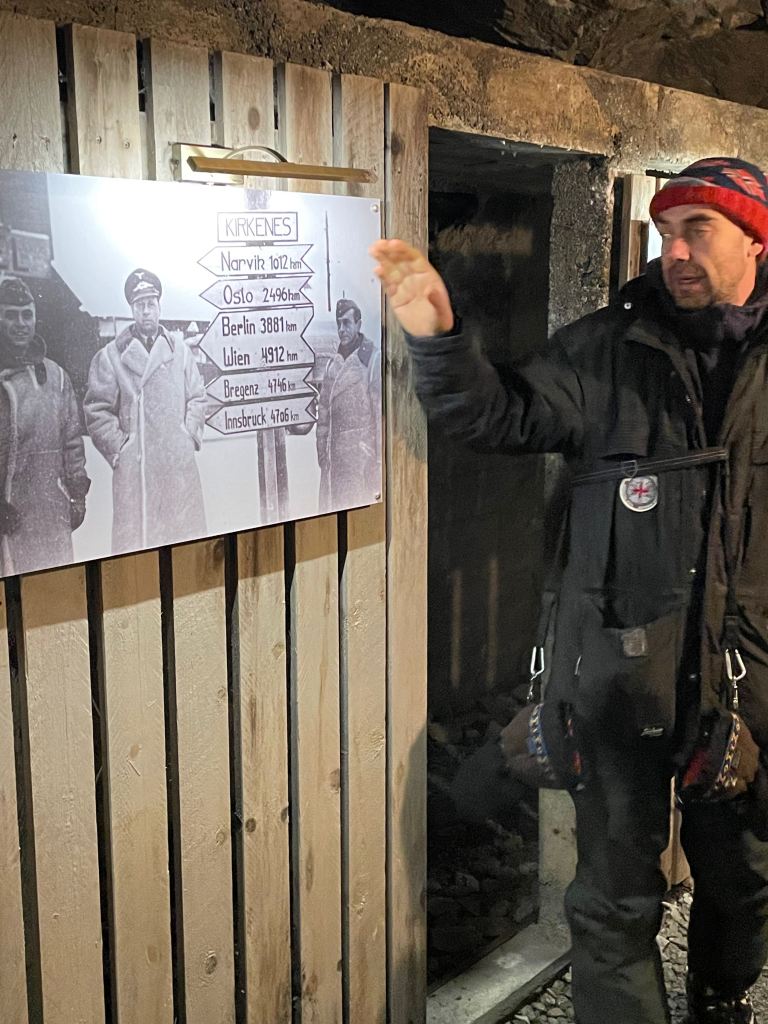

Our tour guide provided all sorts of interesting details about the place, but one of the reasons I don’t do a lot of guided tours is because while I’m entertained and find it interesting at the time, the next day I can barely remember to put my pants on much less remember whatever a tour guide said. Besides, I was rather preoccupied with my impending meeting with Jim and Joe.

I can’t go into a lot of detail because it’s highly classified, but my instructions were to find the rock signed by a Norwegian king and then follow the nearby sign until I see the “frozen water reaching the sky.” Jim and Joe were always so dramatic.

Not only dramatic, but sometimes I question their intelligence. You tell me, do I go left or right?

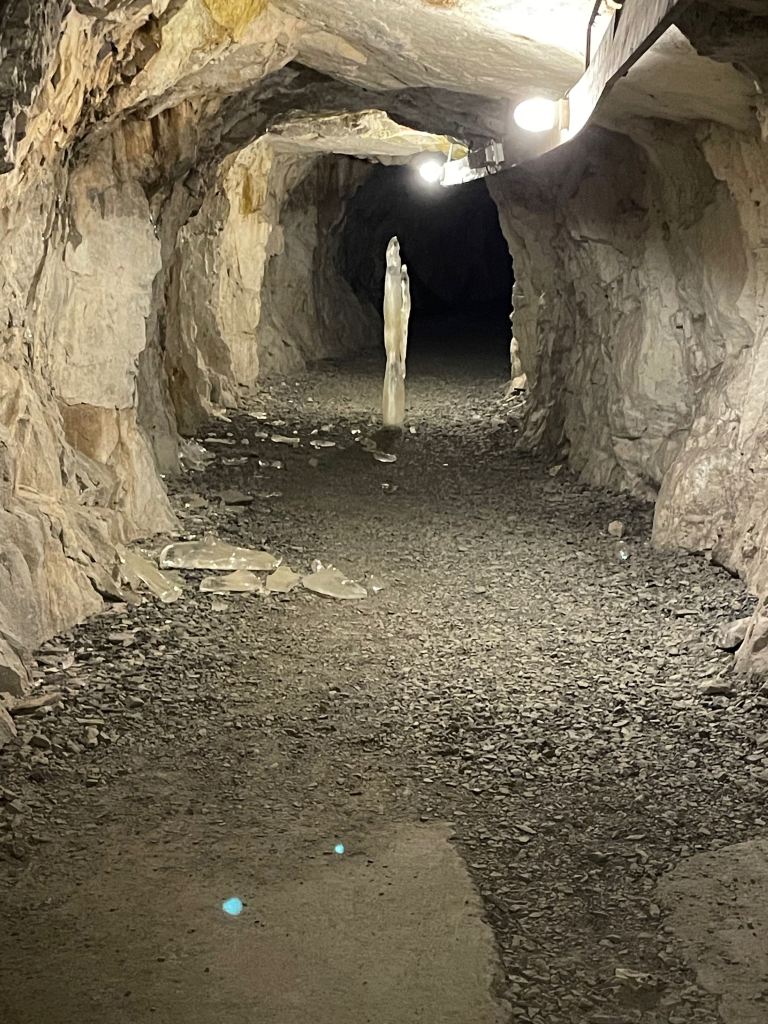
Fortunately, with a bit of luck and choice words for Jim and Joe, I did find the frozen water thing, but only after dodging a huge rolling rock and hopping over stepping stones amidst a pit full of snakes. I finally met up with my Russian invasion crew where we finalized our top secret plans for my infiltration and to knock out Putin. The plan was to ––––Remaining text redacted by order of the CIA––––







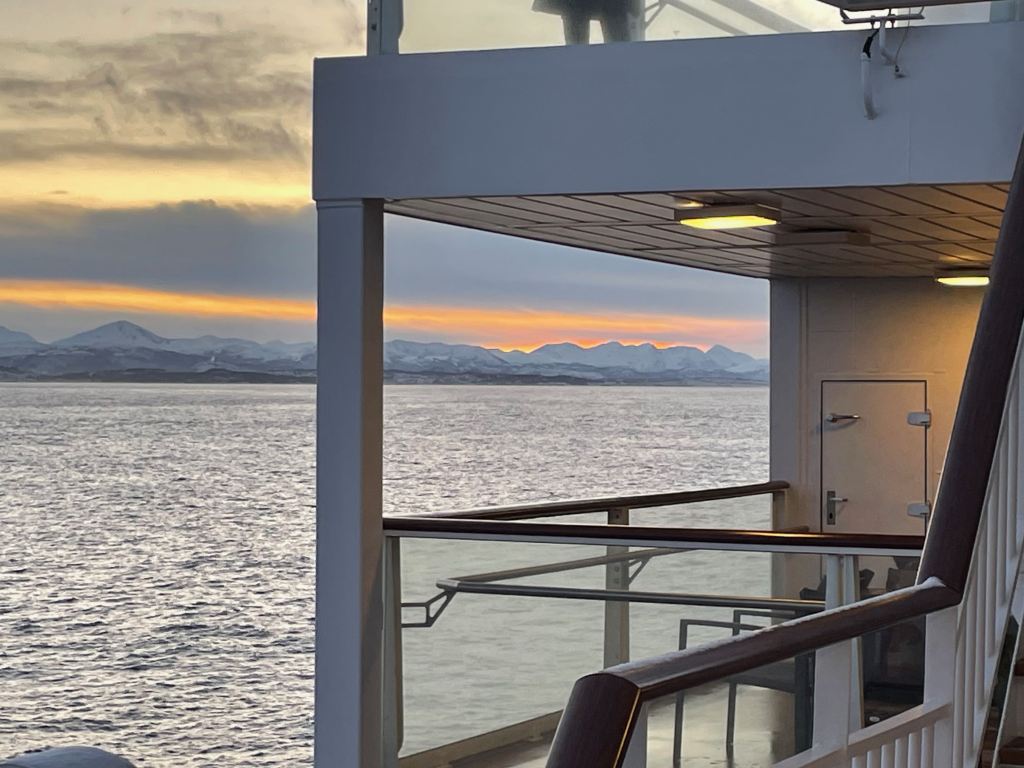

(Scroll down to see previous entries.)
